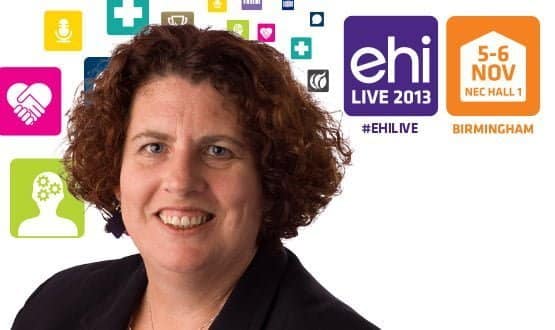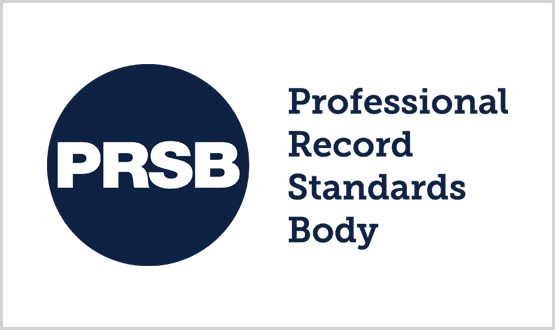Safety first
- 16 October 2013

Dr Maureen Baker is on the brink of a significant change in her career. In November, she will take over from Professor Clare Gerada as chair of the Royal College of General Practitioners.
During her time as chair she will be seconded from her ‘day job’ as clinical director for patient safety at the Health and Social Care Information Centre.
At the HSCIC, she has maintained the particular interest on the safety of IT systems that she developed as clinical director for patient safety at NHS Connecting for Health.
So, as she prepares to hand over her safety role to her colleague Dr Sebastian Alexander, it seems like a good moment to reflect on a decade of involvement in building a safety culture for healthcare IT.
Not on the career plan
Dr Baker admits, with a laugh, that getting deeply involved in the safety of IT in the NHS “was not a career path that I ever mapped out on the back of a brown envelope.”
Instead, it arose out of her wider interest in patient safety. “I joined the National Patient Safety Agency when it was being set up, which was about the same time that the National Programme for IT was being set up,” she says.
“And because a number of the leading informaticians knew me from my work with the College [Dr Baker was honorary secretary of the RCGP from 1999-2009] they came to me when safety issues came up.”
The NPSA, she adds, was also interested in IT: both because it had a clear potential to improve patient safety and because it had an equally clear potential to introduce new risks.
“We were particularly interested in unforeseen consequences,” she says. “For example, there were stories coming out of the US about a paediatric e-prescribing catastrophe.
“The NPSA philosophy was that a structured approach to safety was needed to try and prevent problems and to tackle any issues that did arise.”
Standards and safety cases
When Dr Baker moved to CfH, she took this idea with her, and brought in safety engineers to develop it.
“I think clinical people like me talking to safety engineers is just wonderful, because people bring a safety approach to everything they do.
“And one thing they do is to look for standards. It does not matter in what area they are working – whether it is aerospace, building, or whatever – they say ‘what are the standards’ and how do we comply with them?’”
Of course, when Dr Baker and her safety engineers went to look for standards for NHS IT they found there weren’t any. However, they managed to find a generic standard for the safety of systems with electronic components – IEC 61508.
“The idea was to take the principles of IEC 61508 and apply them. And one of the principles was the safety case. The idea behind the safety case is that if you are a manufacturer in a particular area then you have a responsibility to say ‘it will be safe in the context in which it will be used.’
“So, manufacturers have to do some work to say ‘this could go wrong, and this is a hazard, and this is what to do about that’.”
In other words, the safety case approach assumes that things could go wrong, but that some of these things can be predicted, and headed off at the pass.
Things will go wrong…
As Dr Baker goes on to explain in the context of healthcare IT: “If you start thinking about safety, it soon becomes obvious that there are lots of things that could go wrong in the use of a product that a manufacturer has no control over at all.
“For example, staff might not be trained properly, or the network might go down, or there might be problems with the resolution of an image [captured by a digital imaging system]. The idea of safety cases is that if these potential problems can be identified, then they can be addressed.”
Because so many of the potential safety issues with healthcare IT lie outside the control of the software manufacturer, however, CfH came up with a refinement of the basic safety case concept.
“We came up with the idea of a safety baton, like a relay baton,” Dr Baker says. The manufacturer of a piece of software holds the baton while they are developing their product, but a trust or other healthcare organisation takes on the baton when they take delivery of it.
“In production, the baton sits with the manufacturer, and in the trust it sits with the trust,” Dr Baker sums up. One of the practical outcomes of this was the development of not one but two standards – DSCN14/2009 and DSCN 18/2009 – one aimed at the manufacturers of software and the other at those deploying it.
Improving safety, curing insomnia
The standards were signed off by the National Information Governance Board but, Dr Baker admits, there were some serious issues when it came to getting them adopted.
“We wanted these to be international standards, which meant we had to write them in a particular way,” she says, sighing at the memory of how complex and densely written this made them.
“They were not exactly easy to read – in fact, I doubt anybody would read them except as a cure for insomnia – which was rather off-putting.”
As a result, she asked her safety engineer colleagues to talk to potential users and then re-cast the standards to make them more user-friendly.
“They did a lot of work to write them in English English,” she says, adding the result is that 80 pages of guidance have been reduced to something like 20, with the more complex material taken out into appendices.
An idea with wider applicability
Dr Baker will be talking about the standards and safety cases at EHI Live 2013, where she hopes visitors will work through a real healthcare IT safety issue, using the principles that lie behind them.
However, she argues that the idea of safety cases could be applied far more widely in healthcare; an idea recently promoted by the Health Foundation, which has put out a report on where they might be used to speed up safe innovation and help trusts to adopt best practice in the best way.
“In healthcare, we have a particular view of what constitutes evidence, in which the randomised control trial is taken to be the gold standard,” she says.
“But other industries have a very different approach to evidence. Nobody says let’s have a randomised control trial of two nuclear plants; let’s two and see what happens.
“Instead, they use a hazard management methodology to make something as safe as forethought will allow.” While it’s not an approach that could be used for every healthcare development, this is still an intriguing idea.
It would be interesting to know, for example, whether a safety management approach to the development of telehealth and telecare would have produced a more convincing evidence base that the whole system demonstrator project, with its RCT methodology.
An exemplary safety record
Dr Baker thinks there will be plenty of developments coming along to which the approach could be applied, including telehealth, and the impending explosion of healthcare apps.
In the meantime, and as she prepares to become chair of the RCGP, she is immensely proud of what has been achieved.
“We have got a formal safety management system that has been used by CfH and is now used by the HSCIC. We have got two standards for the suppliers of NHS software and the NHS trusts that use it.
“We have trained something like 2,000 people. And we have a formal management system for logging, managing and following up incidents related to health IT,” she says.
Dr Baker also points out that, at least as far as the national programme was concerned, this work was not carried out in the abstract.
“We have a very good record of products that are safe,” she says. “For example, GP2GP [the programme that transfers patient records between practices when patients move or choose a new doctor] has transferred millions of records between different suppliers’ systems.
“That information includes patient information, medication history, test results… all of which is extremely safety critical, and there have been no safety issues.
“We could say the same of EPS R2 [which transmits prescriptions from a GP practice to a community pharmacy] and the National PACS Programme [which rolled out digital imaging].
“For all the problems with the national programme and with information governance, I would challenge anyone to think of safety issues.”
Dr Baker will be leading a tweetchat about safety, standards and safety cases on Wednesday, 23 October, 2013 at 7pm #EHILive
Dr Baker will be leading a new stream on safety at EHI Live 2013. Visitors to the safety sessions will be able to learn about the principles behind safety cases and then try applying them to a real-world patient safety issue. EHI Live 2013 is more than a meeting, more than an exhibition. For anyone involved in the use of information in healthcare it’s a golden opportunity to update knowledge, get answers to questions, meet the experts and think about the future. This year’s conference is free for all visitors to attend.




